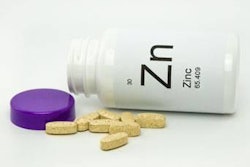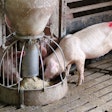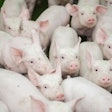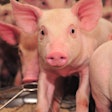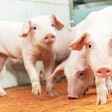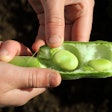When I was asked to write about mannan oligosaccharides (MOS) from the perspective of a consulting nutritionist, my initial reaction was to reject such request. After all, I don’t use them, and available research is confusing at best. But, thinking better of it, I believe it is worth adding to this debate as MOS is a major additive used in many places in the world.
So, why not re-examine the facts?
- First, MOS have been researched extensively and their in vitro effects cannot be disputed. It is now more than one supplier that have verified such positive effects, backed up by credible university trials.
- Second, many experts, including university professors, heartily recommend MOS to be used in diets for poultry and pigs, especially those who have been involved in the research and development phase of this additive.
- Third, we cannot deny that there are major buyers representing large producer interests in many parts of the world, and they have suitable facilities; so we assume they did their research work beforehand and they did it right.
- Fourth, it is a fact now that MOS is a commercially successful additive, as more and more companies try to sell it, evidently to a large customer base.
All these are undisputable facts, based on in vitro work and commercial practice. Let us examine now the other side of the debate that resists such arguments.
- One, in vivo (live animal) studies have been extremely variable; it is to the credit of those companies and research institutions that published the negative results. One example suffices here. In the abstracts section of the American Society of Animal Science, there are two studies using the same exact MOS product, with the same exact protocol. In one study growth was improved by 64 percent, in the other study growth was depressed by 7 percent. I should be excused for not giving out the exact year of this publication (to protect the innocent), because this is only an example and not the norm. But, I hope I have provided enough evidence to make a point.
- Two, nutritionists, and especially those who formulate feeds for a living, tend to be conservative in their approach when it comes to controversial additives. After all, they can only spend so much on additives and they prefer to be as sure as they can that money are always well invested in products that will bring back interest. That, or their job is in peril!
- Three, in my opinion, MOS have suffered from too much marketing — overexposure, if you will — that have tarnished the image of the additive. Perhaps, the effort to market MOS as a multi-tasking additive (from mycotoxins to immunity) did not help create a unified message in the minds of us all. But, that’s just my opinion, which is based nevertheless on my interactions with nutritionists from around the world.
- Four, education-education-education. We need to be educated by the MOS suppliers under what conditions we can use MOS to bring about the very positive results we see in some studies, and when such results are not forthcoming. This will increase confidence among all parties involved and helping customers remain profitable is certainly a recipe for success.
Take home message
Like any additive, there are pros and cons, and a steep price to pay, especially if the additive does not do the job it was supposed to do. On the other hand, by-passing an opportunity is never a wise choice, so my advice would be to test MOS under you conditions if you can, or ask for advice those who have experience using MOS under conditions very similar to yours.
The key here is to find out if MOS (and any other additive working at the gut level) works for you. Then, join the debate.


